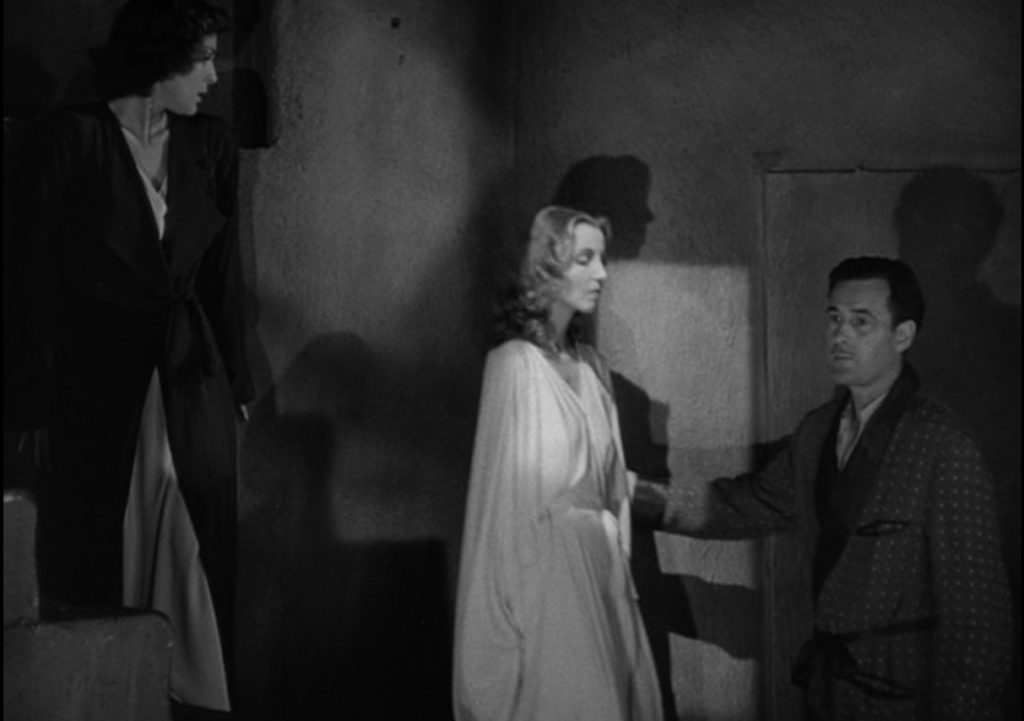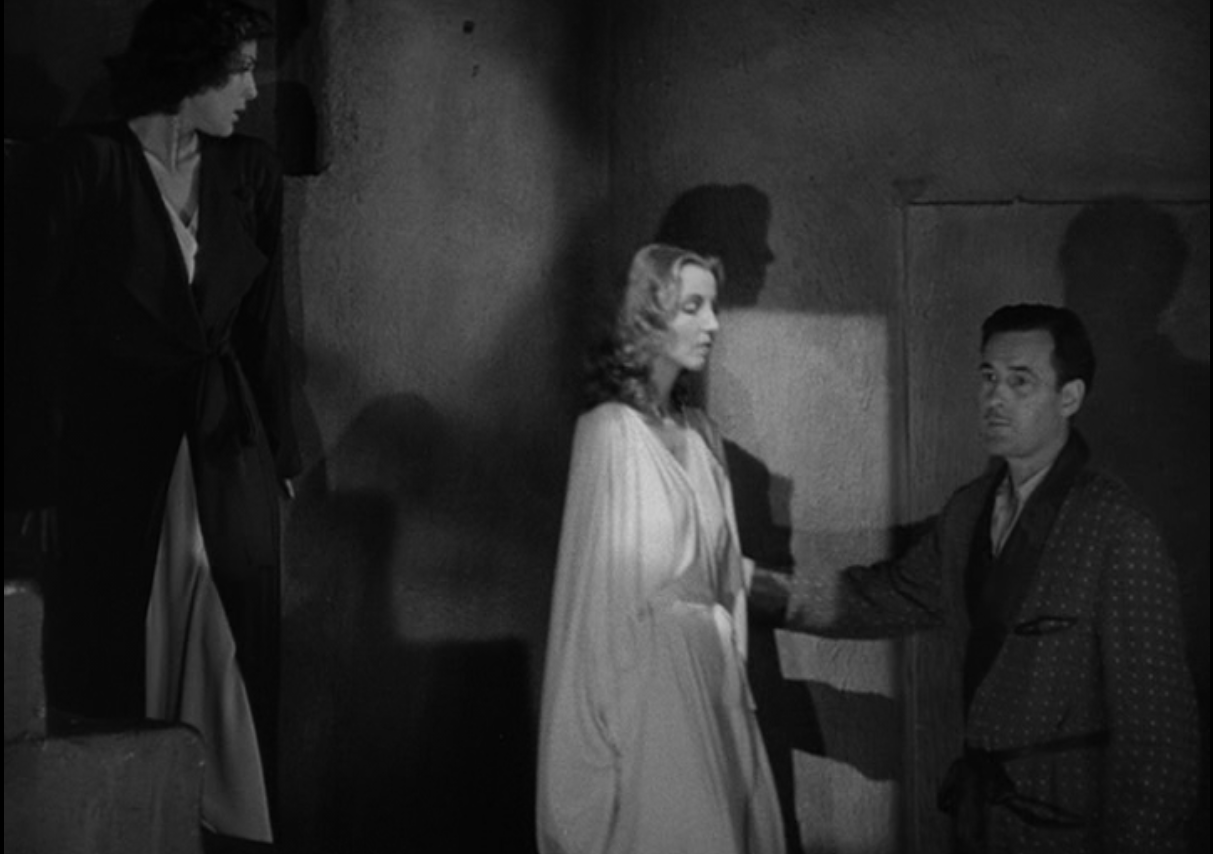Movie Review: I Walked With a Zombie (1943) directed by Jacques Tourneur
It’s a particularly cold and snowy winter in Ottawa, so recently graduated Canadian nurse Betsy Connell (Frances Dee) is quite willing to be hired for private nursing duty to take place on the island of San Sebastian in the West Indies. On the ship to the island Betsy is thinking how beautiful the moonlit sea is, when a man breaks into her thoughts to inform her it’s not beautiful at all. This turns out to be her employer Paul Holland (Tom Conway), owner of a sugar plantation. He informed her that the shining in the sea is phosphorescence from innumerable tiny dead sea organisms rotting on the surface. “Everything good dies here. Even the stars.”

The plantation is called “Fort Holland”, and the carriage driver explains that in the early days, it really was a fort, and his ancestors as well as the ancestors of the other black people on the island, were brought there in chains to be slaves. Betsy evades by noting the beauty of the landscape. The figurehead of Saint Sebastian impaled with arrows in the courtyard is kind of disturbing, though.
At the main house, Betsy meets Wesley Rand (James Ellison), Paul’s younger half-brother, and Alma (Theresa Harris), personal maid to Mrs. Holland. Wesley…has a bit of a drinking problem, and has a strained relationship with Paul. Nobody seems too hurried to introduce Betsy to her patient.
Later that night, Betsy hears weeping and explored the darkened manor, running into Jessica Holland (Christine Gordon). Mrs. Holland just sort of stands there creepily. It turns out that after a fever some months ago, Jessica has fallen into a non-responsive state. She still breathes and can follow basic commands, but does not talk or emotionally respond, and almost never moves on her own. (Except when she walks away if no one is looking.) Why, it’s as though she were some kind of zombie!
While in town, Betsy runs into a calypso singer (Sir Lancelot) who provides some backstory in a jaunty sounding but dark song, the last verse of which is pointed at her. But is it a threat or a warning? She also meets Mrs. Rand (Edith Barrett), mother of the brothers, who now runs a clinic along with Dr. Maxwell (James Bell). Mrs. Rand scoffs at the Afro-Caribbean belief in voodoo, but seems to mean well by the clinic’s patients.
Betsy finds herself falling in love with the bitter but handsome Paul, and resolves to restore Jessica to health and his arms. But is Jessica’s condition something that modern medicine can cure? Or is she truly a zombie?
This movie was loosely based on a story by Inez Wallace, but producer Val Lewton didn’t like the original plotline and had elements from Jane Eyre grafted in by writers Curt Siodmak and Ardel Wray.
This is a nicely creepy movie, though the scary stuff is less the nonwhite religion and more the secrets that have torn the Holland family apart. Jessica wasn’t the nicest person before she fell ill, and that may have something to do with her condition.
Paul is an interesting character. Aware enough to understand that his wealth and position come from the suffering of his family’s slaves and servants, but not motivated enough to actually stop being wealthy and powerful at the expense of others, or make a better deal for his employees. It influences his bitter persona: “They weep when a baby is born, and celebrate when one of them dies.” He also has ambivalent feelings towards his wife, still holding resentment over her treatment of him, but still loving her enough not to want to lose her entirely to death.
“Shame and Scandal in the Family” is, as I am told the young people call it, “a banger.” With bawdier lyrics swapped in, it’s been a hit for many singers. But here it’s frightening–why is this man singing this song to Betsy? What is he trying to accomplish?
The “voodoo”, I am told, is a bit better researched than was usual for Hollywood movies, but given some of the Western medical science is highly dubious, you should bring a large salt crystal.
Content note: The white characters treat the black characters as superstitious savages when it comes to voodoo, though Mrs. Rand is willing to exploit this for what she considers good causes. Discussion of marital infidelity. Probable suicide.
Overall: Some aspects may be difficult to deal with for a modern viewer, but it’s a well-done horror story with enough ambiguity to make it rewatchable.

